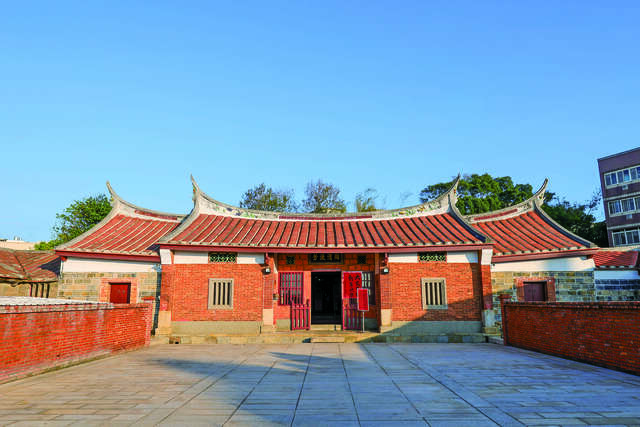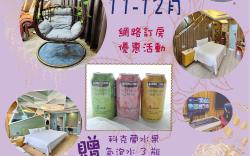Fan-Chiang Old House Complex Introduction
The Hakka old houses serve as a time capsule, preserving a gentle collection of an old village— the Fan Jiang old house complex. This place is not only the pride of the people of Xinxing but also an important stronghold of Hakka culture in Taiwan. House No. 9, known as the Fan Jiang Ancestor Hall, has been designated as a city historical site, symbolizing the glory and heritage of a century-old family. The unique swallowtail design on the roof is solemn and rare, indicating that this site has once received imperial recognition, making it a unique architecture in Taiwan. "Fan Jiang" is not just a surname but a touching story. This unique double surname in Taiwan originates from Huizhou, Guangdong. Fan Wenzhi and his brother changed their surname to Jiang after their mother remarried into the Jiang family, deciding to adopt the surname "Fan Jiang" to repay their stepfather's kindness. This heartfelt evolution of the surname not only preserves the warmth of blood ties but also allows all descendants to take pride in it. They began in Xinxing District, carrying their ancestors' spirit to various places across Taiwan. The old houses authentically present Hakka style. The Fan Jiang old house complex comprises Houses No. 1, 2, 3, 6, and 9, mostly in a typical three-part courtyard layout, surrounded by red brick walls forming a square-shaped space. Throughout the details, the simplicity and ingenuity of Hakka craftsmanship can be seen. The hall number of No. 9 is "Tao Wei," representing the ancestors of both the Fan and Jiang families, symbolizing the spirit of their merger. The plaque hung inside reading "Tao Diao Jia Sheng" expresses reverence for ancestors and aspirations for descendants. The ancestral hall ceremonies connect the spiritual axis of the family. Hakkas hold deep respect for their ancestors, and the Fan Jiang family holds spring and autumn ceremonies every year in the fourth and eighth lunar months, inviting relatives to return home to pay respects and light incense for peace. Whether during Tomb-Sweeping Day, Lantern Festival, Winter Solstice, or New Year, the ancestral hall serves as the core for the clan to unite, not just a ritual but a heartfelt dialogue transcending time. Restoration and revitalization bring historical sites into modern life. In 2021, the Zuo Heng house complex completed its restoration, themed "Heng House Dots," creating six cultural revitalization spaces: Biyin Academy, Reading Time, Arts Learning Classroom, Small Art Gallery, Cultural Tea House, and Living Book House. The Biyin Academy allows everyone to experience traditional temple fair instruments, while the Small Art Gallery exhibits oil paintings by artist Fan Jiang Minghua, bringing shadow puppet themes to vibrant life. The tea house and book house create new scenes for reading and tea tasting, allowing travelers to connect more effortlessly with the old houses and feel the intertwined beauty of tradition and innovation.







































